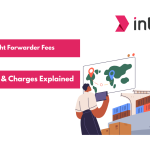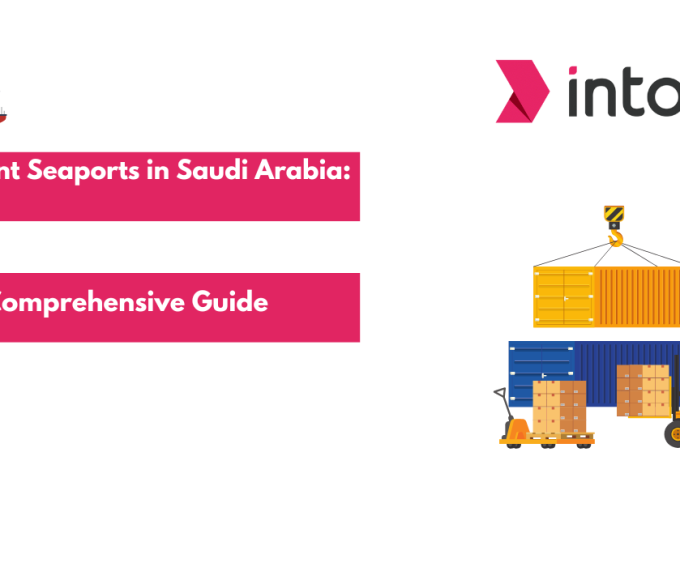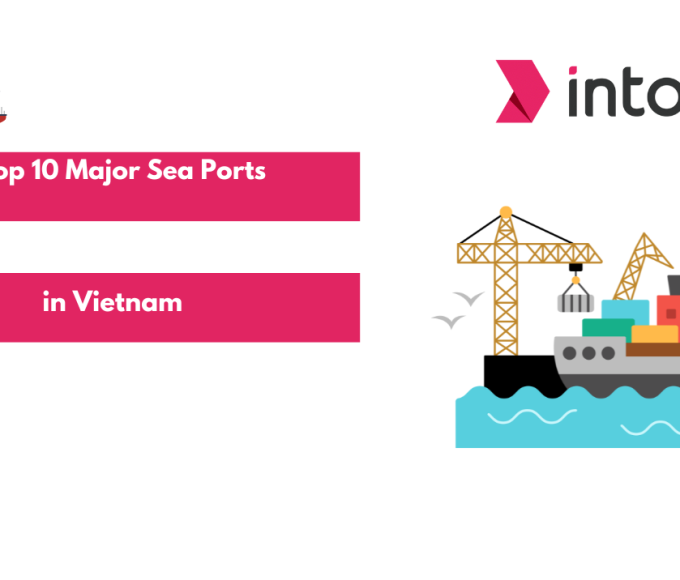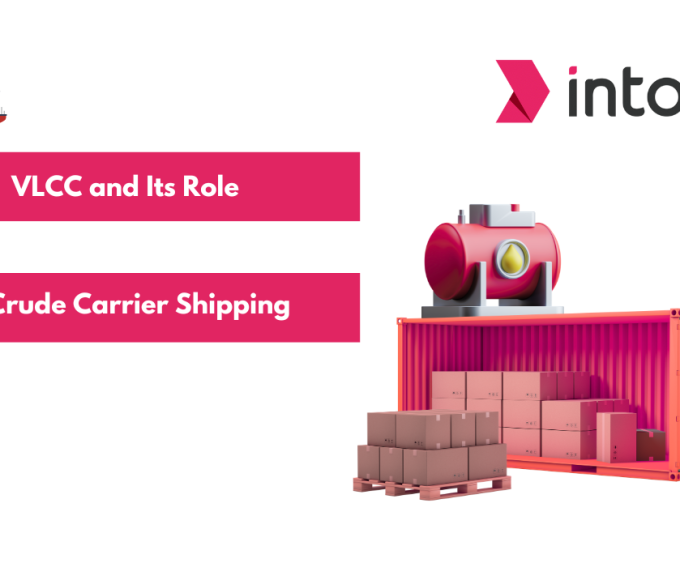Global shipping faced unprecedented challenges, notably the Red Sea crisis, which significantly impacted freight rates. The ongoing conflict in the region led to rerouted vessels around the Cape of Good Hope, extending transit times and increasing costs. As a result, ocean freight rates have more than doubled compared to pre-crisis levels. Experts suggest that if the conflict is resolved, rates could decrease by 20–25% over the following two to three months.
Understanding the components that influence freight charges is crucial for businesses aiming to manage logistics expenses effectively. Factors such as freight rate tariffs, dimensional weight calculations, and additional surcharges play pivotal roles in determining the total cost of shipping.
In this blog, we will explore the types of freight charges, how freight rates are calculated, the impact of current global events, and key methods to reduce shipping expenses.
TL;DR
- Freight rates are influenced by weight, size, shipping method, and distance, with additional charges for packaging and special handling.
- Rising fuel costs, seasonal demand, and international conflicts can lead to increased freight rates.
- Technology, like AI and IoT, is transforming how freight costs are managed and optimized.
- Understanding and negotiating shipping contracts can help businesses control costs and avoid unexpected fees.
- Using a trusted freight forwarder like Intoglo can simplify the process and reduce costs for India-USA shipments.
What are Freight Rates and Charges?
Freight charges and costs are the costs involved in transporting goods from one place to another. These costs can include the basic freight rate, which is the core charge for moving goods, typically calculated based on factors such as weight, size, distance, and the chosen shipping method (whether by air, sea, road, or rail).
Along with the freight rate, there may be extra charges for things like packaging, special handling (such as temperature control for delicate items), and insurance to cover the goods during transportation.
Carriers may also apply surcharges for things like fluctuations in fuel prices, seasonal demand, or added security measures. Understanding these factors helps businesses accurately estimate and manage shipping costs, ensuring better control over logistics expenses.
Confused by the complexity of freight charges?
Get in touch with Intoglo!Key Factors Influencing Freight Charges
Freight charges are shaped by several factors that affect the overall cost of transporting goods. Understanding these can help businesses manage shipping expenses efficiently.
- Shipping Terms (Incoterms)
Shipping terms like FOB and CIF determine who bears the costs at various stages of the shipment. The choice of terms can affect whether the seller or buyer is responsible for the freight, insurance, and customs duties, influencing overall costs.
- Mode of Transport
The transport mode (air, sea, rail, road) impacts both the cost and delivery time. Air freight offers quicker delivery but comes at a higher cost, whereas sea freight is more budget-friendly but takes longer, particularly for large or heavy items.
- Fuel Prices and Surcharges
Fuel surcharges (e.g., BAF) are added to shipping costs based on fluctuations in fuel prices. Rising fuel costs can lead to increased freight charges, especially for sea and air transport.
- Cargo Characteristics
The size, weight, and nature of the cargo affect the overall freight charges. Oversized or hazardous goods often incur extra fees for special handling, packaging, and equipment.
- Distance and Transit Time
Longer distances and faster delivery times generally increase shipping costs. Express shipping may cost more, while slower methods like sea freight are more cost-effective but take longer.
- Carrier and Freight Forwarder Choices
The carrier’s efficiency and the freight forwarder’s services (like shipment consolidation) influence freight rates. An inefficient carrier or forwarder may lead to delays and higher charges.
- Port and Terminal Fees
Port fees and terminal handling charges (OTHC) cover the cost of loading, unloading, and storing goods at the port. Busy or congested ports often have higher fees, raising shipping costs.
- Customs Duties and Taxes
Customs duties and taxes are determined by the value and classification of the goods being shipped. Failure to account for these can result in unexpected charges during customs clearance.
- Insurance and Risk Factors
Cargo insurance adds to freight charges, especially for high-risk or valuable goods. Insurance premiums vary based on the goods’ value and the risk of loss or damage.
- Regulatory and Environmental Factors
Regulations like low-sulfur fuel requirements or security measures may introduce surcharges. Compliance with these regulations can increase shipping costs due to additional operational requirements.
Looking for cost-effective and efficient shipping solutions?
Request a quote from Intoglo!Suggested Read: Understanding Types and Differences of Carriage and Freight
Types of Freight Rates and Charges
Freight charges can differ greatly based on factors like the shipping method, the type of cargo, and the destination. Understanding the different types of freight charges is essential for businesses to accurately estimate and manage shipping costs.
Here, we break down the key types of charges that typically apply in the ocean freight industry.
1. Basic Charges
- Ocean Freight Rate: The core charge for moving goods from one point to another, based on weight, volume, or distance.
2. Additional Charges
- Fuel Surcharge: A variable fee based on fluctuations in fuel prices.
- Accessorial Charges: Extra costs for additional services like loading, unloading, or special delivery.
- BAF (Bunker Adjustment Factor): A surcharge to account for changes in fuel prices (specifically bunker fuel used in ships). It is added to cover fuel cost fluctuations.
- IFP (International Freight Product): A surcharge or fee that applies to specific international freight products. It may cover extra services or specific shipping methods that require more complex handling or higher risk.
- OFUE (Out of Gauge Equipment): Charges for transporting goods that do not fit within standard container sizes, such as oversized or heavy equipment.
- ERS (Emergency Risk Surcharge): A fee imposed to address additional risks during transit, such as increased security or logistical challenges.
- Load, Lash, and Secure (LLS): Charges for the labor and equipment required to properly load, lash, and secure cargo in the container or transport vehicle to prevent shifting during transit.
3. Customs-Related Charges
- Customs and Import Duties: Fees based on the value and nature of goods imported into a country.
- Documentation Fees: Charges for preparing essential shipping documents (bills of lading, customs declarations).
- Cargo Data Declaration (CDD): A fee for submitting detailed information about the cargo, such as its contents, origin, and destination, to customs authorities to ensure proper handling and compliance.
- Customs Entry (CUS): Fees charged for processing the customs clearance of goods entering a country.
4. Handling-Related Charges
- Packaging Fees: Charges for special packaging to ensure the safety of goods during transit.
- Terminal Handling Charges (OTHC): Fees for the handling of goods at transportation terminals, including loading, unloading, and storing goods temporarily at port facilities.
- Heavy Cargo Surcharge: Extra fees for shipping bulky or heavy items requiring special equipment or handling.
- CON (Container Service Charge): A fee for using containers to transport goods. This can include the rental or maintenance of containers and the equipment required for their handling.
- HEA (Hazardous Equipment Surcharge): This fee applies to goods that require special handling or equipment due to their hazardous nature. It includes goods like chemicals, flammable items, or other dangerous products.
- Shipping Line Bill of Lading (BIL): Charges related to the issuance of the bill of lading by the shipping line, which acts as a receipt for the cargo, a contract of carriage, and a document confirming ownership of the goods.
5. Other Charges
- Insurance Fees: Cost to insure cargo during transportation against loss or damage.
- Demurrage Charges: Fees for holding cargo beyond the agreed-upon time at ports or terminals.
- Transshipment Charges: Additional fees for transferring goods from one vessel or transport mode to another.
- Weight/Volume Charge: Charges are determined based on either the actual weight or the volumetric weight of the cargo, depending on which is higher.
- Collection Fee: A fee for collecting payment on behalf of the shipper or seller, usually for the transaction related to the shipment or delivery.
FOB (Free on Board) Category Charges
- FOB Origin (Freight Collect): The buyer is responsible for the shipping charges and risk of loss once the goods leave the seller’s location. This includes all costs from the point of shipment, including transportation, loading, insurance, and other charges.
- Freight Collect: The buyer pays the freight charges directly to the carrier.
- FOB Origin Charges: Charges incurred for goods from the seller’s warehouse or point of origin to the carrier.
- FOB Destination (Freight Prepaid): The seller is responsible for the freight charges and the goods’ transportation costs until they reach the buyer’s specified destination.
- Freight Prepaid: The seller pays the freight charges, including transportation, insurance, and any applicable port fees, until delivery is completed at the destination.
- FOB Destination Charges: All costs related to the shipment until the goods reach the destination port, including unloading, warehousing, and final delivery costs.
For businesses looking to streamline their shipping process, Intoglo offers direct and cost-effective Ocean Freight (FCL Shipping) services from India to the USA. With special contract rates from major global shipping lines, Intoglo ensures faster, more reliable service with no intermediaries involved. Intoglo offers transparent, instant rate quotes and optimized cost and transit times, including extended last free Days at U.S. ports to reduce demurrage cost.
Calculating Freight Costs
Calculating freight costs accurately is essential for businesses to manage their shipping expenses effectively. Several factors come into play when determining the final freight cost, including freight rate tariffs, dimensional weight vs. actual weight, and additional surcharges. Let’s break down the key elements involved in the calculation process.
1. Freight Rate Tariffs and Contracts
Freight rate tariffs are the standardized charges established by carriers for the transportation of goods. These tariffs are based on various factors such as distance, transport mode (air, sea, road, rail), and the nature of the goods being transported. Freight rates are typically published in a tariff book or rate sheet and are used as a reference point for calculating shipping costs.
In addition to the tariffs, businesses often enter into freight contracts with carriers, which can offer negotiated rates based on factors like shipment volume, frequency, or long-term commitments. Freight contracts may also include specific terms that affect the costs, such as fuel surcharges, accessorial charges, and deadhead charges.
It’s essential to remember that freight rates can differ widely depending on the carrier, shipping method, and region. Therefore, it’s important to review and compare different options to optimize shipping costs.
2. Dimensional Weight vs. Actual Weight
In ocean freight, shipping costs are typically calculated based on either actual weight or dimensional weight, depending on which is greater. Understanding the distinction between the two is crucial, especially when dealing with bulky but lightweight items.
- Actual Weight: This refers to the actual weight of the cargo, measured in pounds (lbs) or kilograms (kg). For dense, compact items, the actual weight is used to calculate the freight cost.
- Dimensional Weight: Dimensional weight is calculated to reflect the space a shipment occupies in the container. For ocean freight, this is particularly important for large but light cargo that takes up valuable space in shipping containers. The formula for dimensional weight in ocean freight is:
Dimensional Weight = Length×Width×Height/ Dimensional Factor
For ocean freight, the dimensional factor is typically 1,000 for length in centimeters, width in centimeters, and height in centimeters (also known as volumetric weight). This ensures that both the space the cargo occupies and its actual weight are fairly reflected in the cost calculation.
For example, if a shipment is large but lightweight, the dimensional weight might exceed the actual weight, leading to a higher freight charge based on the space it occupies in the container. Conversely, if the cargo is heavy but compact, the actual weight will likely be the determining factor in the charge.
How to Optimize Freight Costs?
- Consolidation: Shipping multiple smaller packages together as a single larger shipment can reduce overall costs by spreading the charges over more items.
- Negotiate Contracts: If you regularly ship large volumes, negotiating favorable contracts with carriers can lead to significant savings through discounts or more favorable terms.
- Choose the Right Mode of Transport: Consider the cost-effectiveness of different transport modes for your shipments. While air freight is fast, it’s also more expensive—using sea freight or ground transport for non-urgent shipments can save money.
- Accurate Measurements: Ensure that your cargo is measured accurately for dimensional weight to avoid unnecessary charges. Overestimating the size of a shipment can lead to additional charges based on volume.
For an accurate assessment of your shipment costs from India to the USA, reach out to Intoglo. Our logistics experts will assist you throughout the process, ensuring you get the most efficient and cost-effective solutions tailored to your shipping requirements.
Future Trends in Freight Charges
As the global logistics industry evolves, several key trends are shaping the future of freight charges. From technological innovations to growing concerns about sustainability, businesses can expect significant shifts in how freight costs are calculated and managed.
Here’s an overview of some of the most impactful trends that will influence freight charges in the coming years.
- Technological Advancements
- Blockchain: Enhances transparency and security in supply chain transactions, reducing administrative costs and fraud, leading to lower freight charges.
- Internet of Things (IoT): Real-time tracking of shipments improves accuracy, reduces delays, and minimizes unexpected surcharges, helping businesses manage freight costs more effectively.
- Artificial Intelligence (AI): AI-driven route planning and cargo optimization help reduce fuel consumption, avoid empty miles, and streamline operations, ultimately lowering freight costs.
- Automation: The adoption of automated systems in warehouses, logistics hubs, and vehicles is driving efficiency and reducing labor costs, which can be reflected in lower shipping charges.
- Big Data Analytics: Analyzing large volumes of data helps predict shipping trends, optimize routes, and avoid peak-season pricing spikes, leading to more accurate and cost-effective freight charges.
- Sustainability Initiatives
As environmental concerns continue to grow, sustainability is becoming a major factor in calculating freight costs. Governments and organizations are implementing stricter environmental regulations, such as carbon emissions standards and fuel efficiency requirements. This is pushing carriers to adopt greener practices, including the use of low-emission vessels, electric trucks, and carbon offset programs.
For example, ships equipped with energy-efficient engines or biofuel use may incur higher initial costs but reduce fuel expenses over time, influencing freight charges. To help businesses better manage and reduce their carbon footprint, Intoglo offers a Logistics Carbon Emissions Calculator. This tool allows you to track and assess the environmental impact of your shipments, helping you make informed decisions and implement sustainable shipping strategies that align with your green initiatives.
- Predictive Analytics
Predictive analytics is transforming the freight industry by enabling companies to forecast demand, optimize routes, and predict potential disruptions. By analyzing historical data and current trends, predictive tools can help businesses better manage inventory, reduce delays, and avoid unexpected surcharges. This can lead to more accurate freight cost predictions and help shippers make data-driven decisions that optimize costs.
For example, predictive analytics can help businesses plan shipments more efficiently, avoiding peak-season price hikes or reducing idle time for shipments
These trends are not only making the shipping process more efficient but also opening up opportunities for businesses to better control and manage their shipping costs.
Want to optimize your freight shipping costs?
Reach out to Intoglo!Conclusion
Navigating freight rates and charges is crucial for businesses seeking to streamline their shipping processes and optimize logistics costs. By understanding the components that influence freight charges, companies can better manage their expenses and avoid unexpected fees. As the logistics landscape evolves, embracing technological advancements and data-driven strategies will be essential for staying competitive.
To simplify your shipping experience, Intoglo provides seamless FCL shipments from India to the USA, backed by an in-house compliance team that ensures all shipments undergo pre-screening before departure. With over 30 years of experience, our customs brokers expertly handle clearance at both Indian and U.S. ports.
Reach out to Intoglo today to benefit from their comprehensive and cost-effective freight solutions.
FAQs
1. What are the freight rate charges?
Answer: Freight rate charges refer to the cost of transporting goods by sea, air, or land. These charges vary based on factors such as weight, distance, and shipment type.
2. How to calculate freight cost?
Answer: Freight cost is calculated based on factors such as weight, volume, distance, shipping method, and delivery speed. Additional costs like insurance and fuel surcharges are also considered.
3. Who pays freight charges?
Answer: Freight charges are typically paid by the buyer or seller, depending on the Incoterms used in the shipping agreement. Common terms include FOB, CIF, or Ex Works.
4. What are the current freight rates?
Answer: Current freight rates fluctuate based on market conditions, route, fuel prices, and shipping demand. Rates can be obtained through freight carriers or logistics platforms for accurate, real-time pricing.
5. What does FOB mean in shipping?
Answer: FOB (Free on Board) means the seller covers shipping costs until goods are loaded onto the transport vessel. After that, the buyer assumes responsibility for shipping costs.









Leave a comment